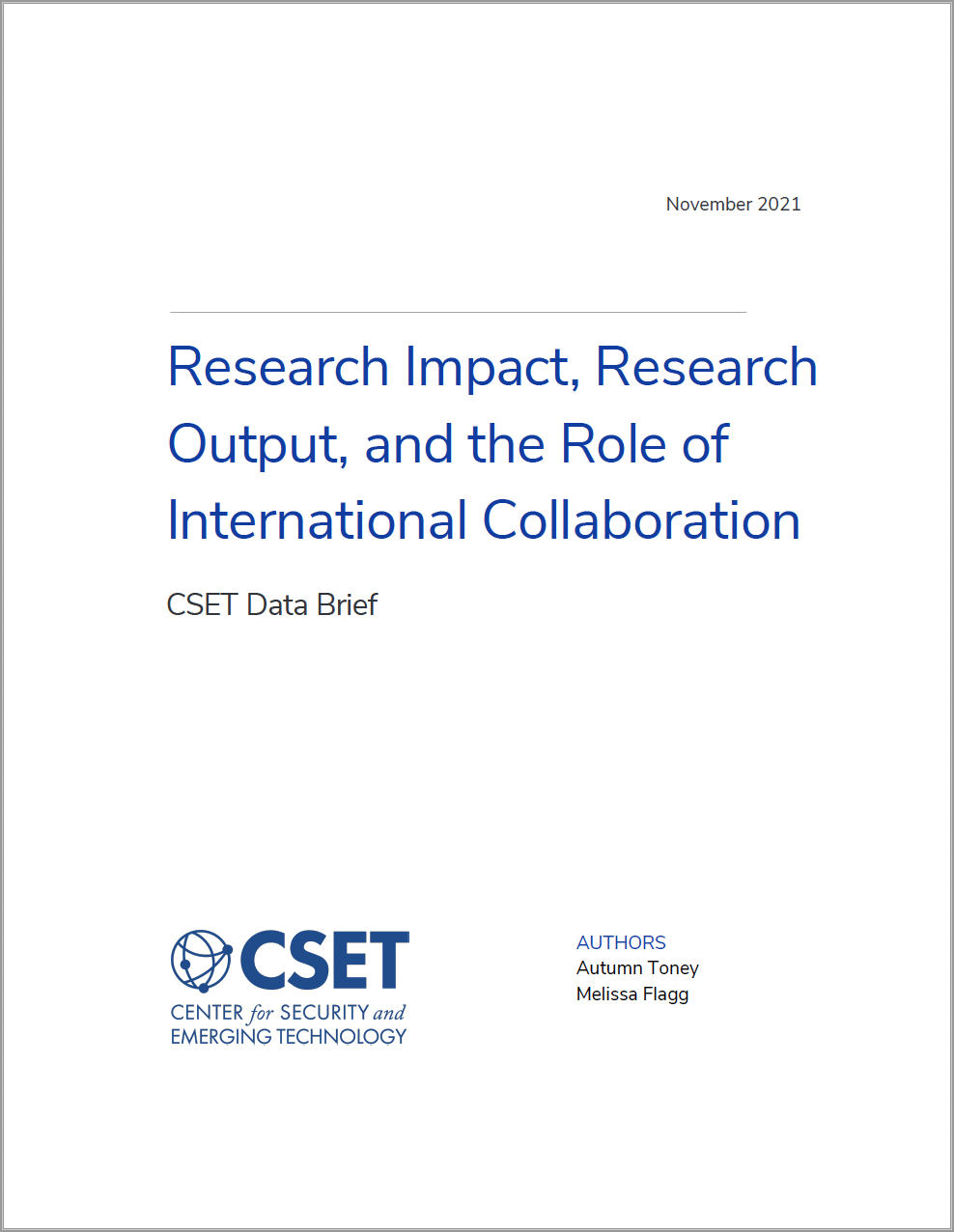Introduction
Over the last two decades, global policy and national strategy have encouraged international research collaborations as a way to tackle massive research challenges surrounding emerging technologies. However, due to increasing political concerns over research collaborations with China, recent studies have analyzed how these collaborations affect research output and impact, with a particular focus on collaborations between the United States and China.
Studies to clarify which countries lead in scientific research output and which countries contribute the highest impact work typically find that while both China and the United States are leaders in research publication output, the United States leads in high-impact research. However, most studies focus on one specific country’s collaborations in a narrow area of research during a short period of time. This data brief addresses the question of how international collaboration relates to research publication impact and output across all fields of research for the 10 countries with the highest publication output from 2010 to 2019, giving a much more comprehensive analysis of output and impact across the major science and technology producing nations.
Takeaways:
- Analyzing collaborative research impact and output together provides a more nuanced perspective into who is “leading” in scientific research.
- Countries collaborating with China experience a disproportionate decline in research publication output relative to China when collaborations with China are removed. However, China experiences a significant decrease in highly cited research publication output if international collaborations are removed.
- Generally, publications with four or more country collaborators are higher impact, meaning more highly cited, than publications with two or three country collaborators.
